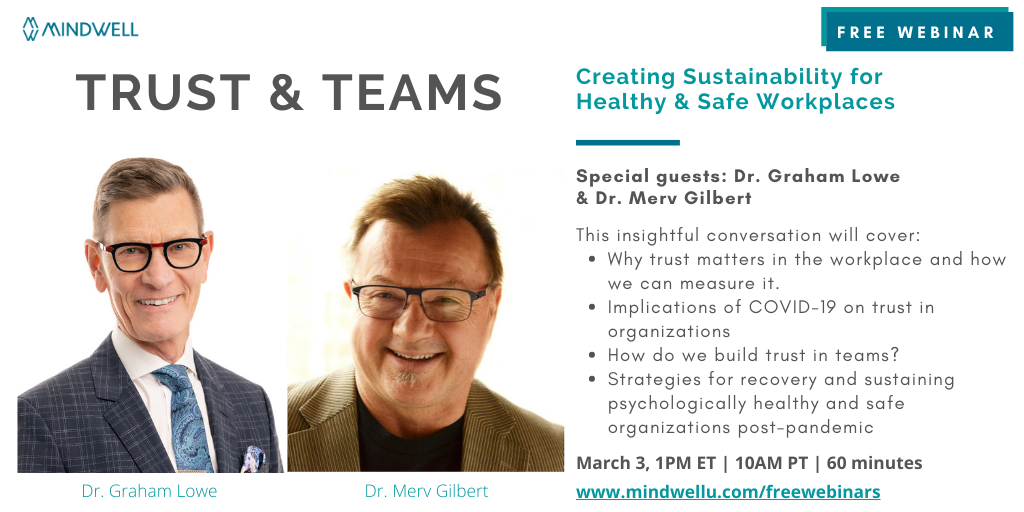Much debate swirls around the potential for COVID-19 to reshape the future of work.
Before jumping to the conclusion that remote work is one of the unintended up-sides to the pandemic, it helps to view the COVID-19 work from home (WFH) trend in broader context.
Doing so reveals a paradox: pandemic WFH practices were quickly imposed in response to a public health crisis, yet there is solid pre-pandemic evidence of an unmet demand for more flexible work arrangements. The challenge is whether employer’s post-pandemic recovery plans can redesign current WFH practices to meet employees’ need for flexibility in ways that promote worker well-being and organizational performance.
Statistics Canada reports that the percentage of employees doing any scheduled work from home hovered between 10 and 13 percent from 2000 and 2018. By the end of March this year, that figure had jumped to 39 percent.
However, this jump in WFH has not met workers’ pre-pandemic needs. Numerous surveys over the last decade document a pent-up desire for more flexible work arrangements. Many workers want more choice in their work arrangements as a way to achieve better work-life balance.
Pandemic-induced WFH has thrown this balance off kilter. For countless employees, WFH means working longer hours without the resources of a well-equipped office. And for many working parents, particularly mothers, home-schooling their kids made the juggling especially stressful.
Earlier discussions of flexibility didn’t present a one-size-fits-all solution. Successful flexible work arrangements encompass a range of options, tailored to the specific needs of a workforce. These ranged from reduced work weeks to flexible daily start and stop times, self-scheduling for shift workers, job sharing, family or personal care days, and occasional work from home days.
The key to successful flexibility is giving workers more control over their work life, while maintaining face-to-face working relationships. Consider that when Rethinking Work surveys asked Canadians what makes them look forward to going to work, the most common response was the great people they work with. Positive relationships with coworkers and supervisor enable employees to thrive at work, setting the stage for collaboration and innovation.
Employers can do three simple things to strengthen virtual relationships. First, ensure that employees have time to connect with each other on a personal level, making it safe to talk about COVID-19 concerns. Second, encourage managers to reach out in meaningfully supportive ways, starting by asking employees “how are you doing?” and listening to their responses. And third, make all communications sensitive to what employees are going through, inviting two-way dialogue about how to work better together virtually.
These steps are only a start. Many companies have proclaimed that their culture is their strategic advantage. Now’s the test: Employers’ biggest challenge is using core corporate values to help shape healthy and productive pandemic – and post-pandemic – work norms.
Virtual work has big implications for the mutual trust on which strong cultures are based. Tobias Lütke, CEO of Shopify, coined the term “trust battery.” The battery’s charge is either increased or decreased with every interaction. Trustworthy leaders consciously use every encounter to charge up employees’ trust batteries. For this to happen virtually, managers need to reflect on how well they exhibit openness, honesty, caring, fairness, respect, and reliability.
These trust-building qualities can be learned, presenting an opportunity for organizations to develop essential leadership capabilities now. Managers no longer have ‘face time’ to monitor employee productivity. During the pandemic they have no choice but to trust that employees are self-motivated. In future, this could have positive spin offs in terms of a more loyal and high performing workforce. Yes, new office work norms will emerge from the COVID-19 pandemic. The same surveys that confirm the need for flexible work arrangements also highlight the importance of giving employees a say in shaping these norms. Employers would be well advised to consult with their employees to find out their experiences with WFH and their preferences for post-pandemic work arrangements. Employees’ trust batteries will be recharged if this is handled well.

